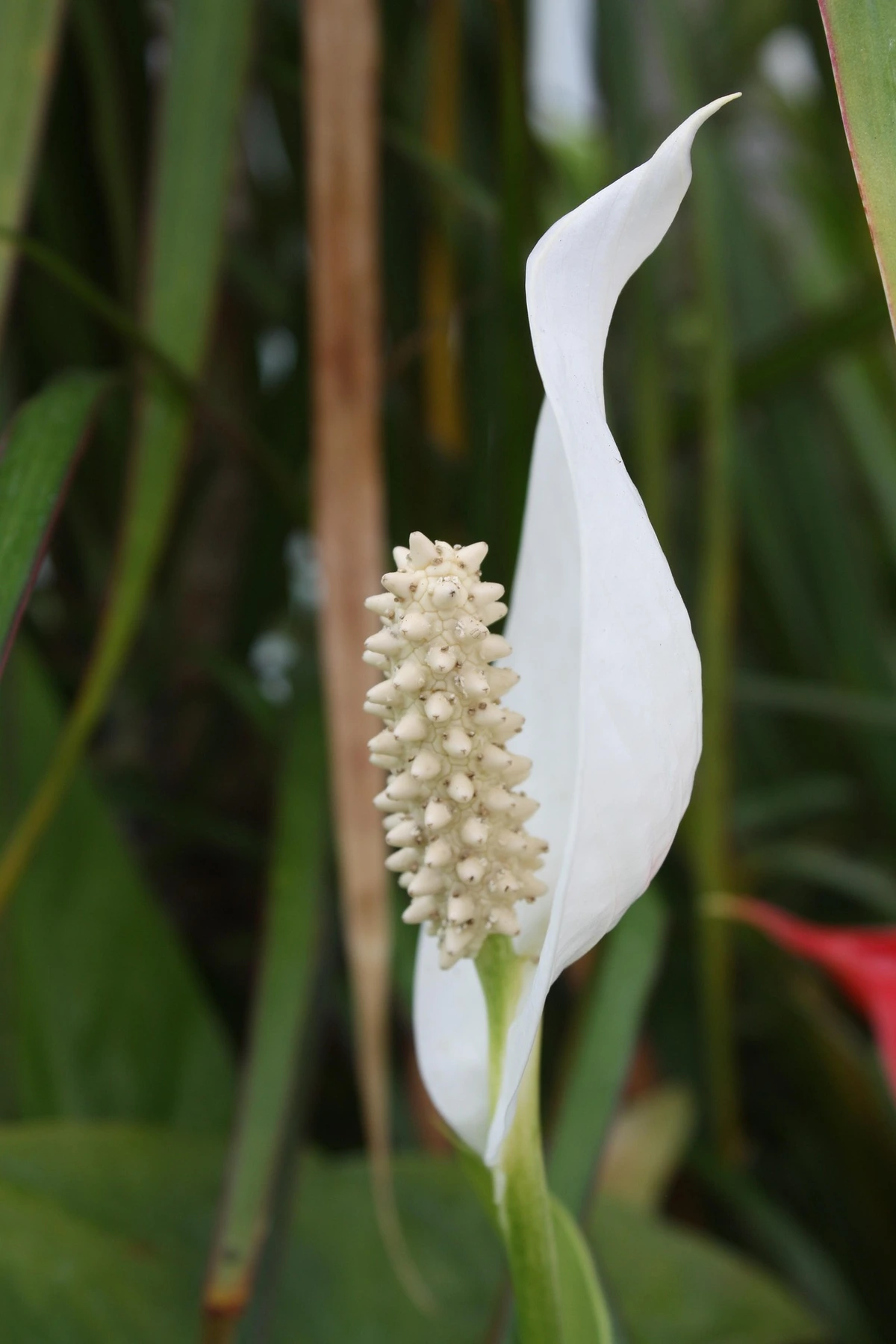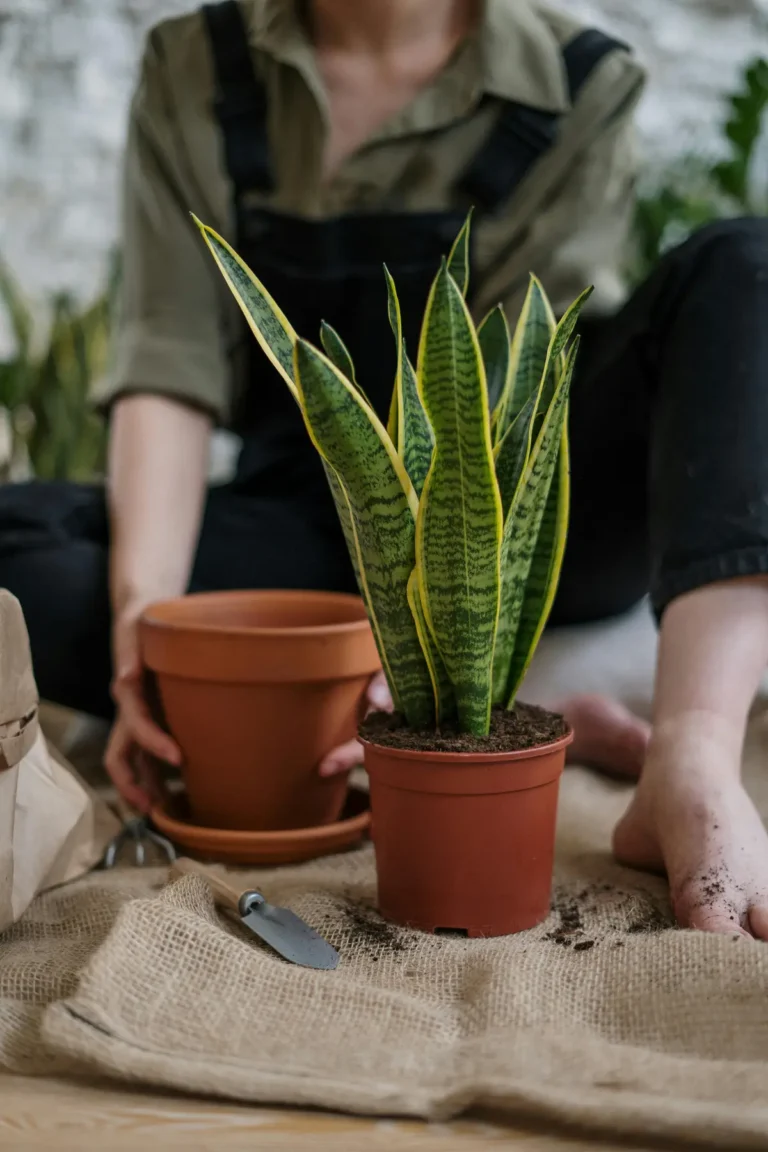Taking care of a peace lily isn’t as difficult as some people make it seem. With some indirect light, water, and a bit of attention, your peace lily will blossom. And you reap the added benefits of cleaner air and a lovely, calming plant in your home.
Just remember: don’t worry too much. Peace lilies are forgiving, so even if you goof up here and there, they’ll recover. And I know you below it, they are worth it!
So if you’re considering adding a peace lily to your home, do it — just be sure to offer it a cozy living situation, give it a little love and care, and reap the perks of having this easygoing plant in your life. Happy gardening!
How Do You Care for an Indoor Peace Lily?
Caring for a peace lily is fairly simple. Here are the essentials:
Light—Peace lilies thrive on bright, filtered light. Don’t put them directly in the sun; it can burn their leaves. A window that lets in filtered light works wonders.
Watering—When the top inch of soil feels dry, water them. Peace lilies prefer some moisture but don’t go overboard. Overwatering can lead to root rot. If you’re not sure, it’s better to wait a little longer than to overwater.
Humidity — These plants like a bit of extra humidity, so place them in an area with some if you have dry air; mist them every now and then or place a humidifier near them. It’s not necessary, but it keeps them nice and lush.
Ideal Temperature – The preferred temperature range for them lingers between 65°F and 80°F (18°C to 27°C). Avoid exposing them to drafts or air conditioners, as abrupt temperature changes can give them a stress attack,” Mr. Messa said.
Fertilizing—During spring and summer, feed your peace lily with a balanced liquid fertilizer once a month. And so ease up on the feeding; in fall and winter they don’t need much.
What Are the Advantages of Owning a Peace Lily?
You may be asking, “Why do I give a flying fig about a peace lily? Well, lots of reasons.
Air Purifier—The peace lily excels at purifying the air. NASA even studied them as a toxin-removing powerhouse in their Clean Air Study, where they removed toxins like benzene and formaldehyde from the air.
Easy Maintenance—Like I already shared, peace lilies are easy to maintain. They’re ideal for beginners or anyone who doesn’t have a green thumb.
Aesthetically Pleasing—Peace lilies have glossy, dark green foliage with white flowers that add elegance to any room. They bring some nature to your space, making it fresher and calmer.
Mood Booster—Plants can positively affect your mood and allow you to feel more at ease. Some plants, particularly peace lilies, are known to help you feel calm and peaceful.
What Is the Best Location for a Peace Lily?
The location of your peace lily is paramount! Here are some factors to help decide on the ideal location:
Do Not Keep in Direct Sunlight—As already said, direct sunlight can burn their leaves. They thrive in bright, indirect light. A location close to a window with sheer curtains is best.
Avoid Cold Drafts—Don’t keep your peace lily near windows or doors that open frequently. That can stress the plant out and delay its growth.
Low Light Areas—Peace lilies can survive in lower light, but if you want your peace lily to flower, you should give it at least a few hours of indirect sunlight. A nice, well-lit corner or a spot on a bookshelf will typically suffice.
Bathrooms—Bathrooms have a high degree of impossible moisture, which most plants will not tolerate. You just don’t want them to be sitting in total dark all day.
What Should You Do About Peace Lily Brown Tips?
Once in a while, you may notice some brown tips on your peace lily’s leaves. Here’s the thing: it’s rather common, particularly if you’ve had the plant outside in direct sunlight, if you’ve watered it too inconsistently, or if the humidity is too low. But fear not — it’s perfectly fine to remove the brown tips.
Snip the brown edges lightly with clean scissors, being careful not to cut into the healthy green part of the leaf. You want to cut them back to where the healthy leaf begins. This should also help maintain the overall fresh, tidy look of the plant.
If you are seeing the brown tips frequently, however, it may be time to consider your care regimen. This is frequently the result of overwatering or underwatering, as well as water that has high levels of chemicals, such as fluoride. If this continues to happen, use distilled or purified water instead.


